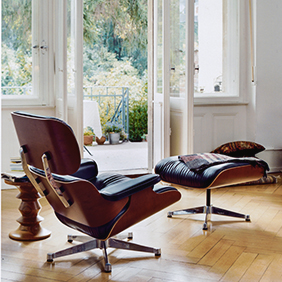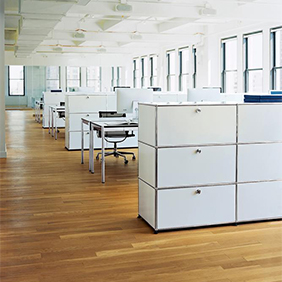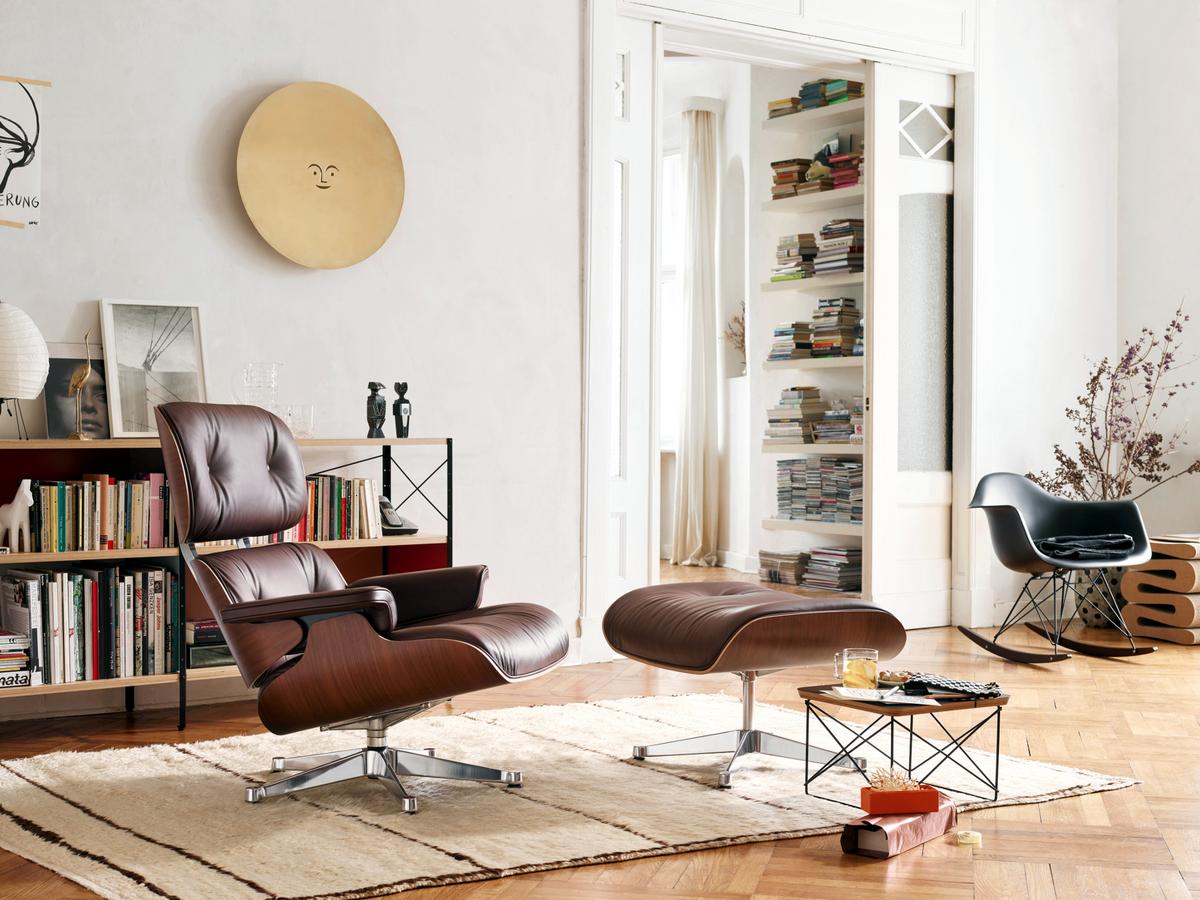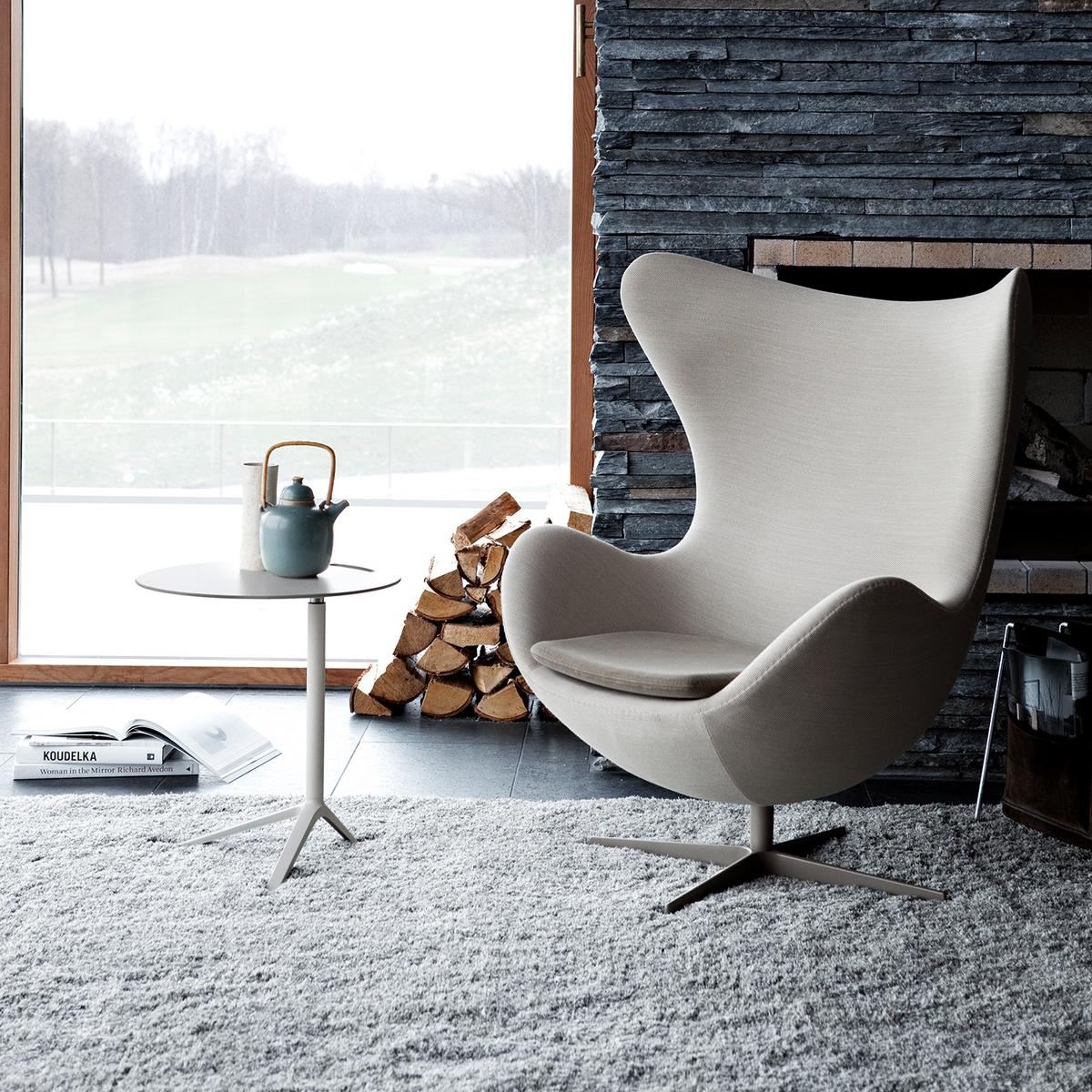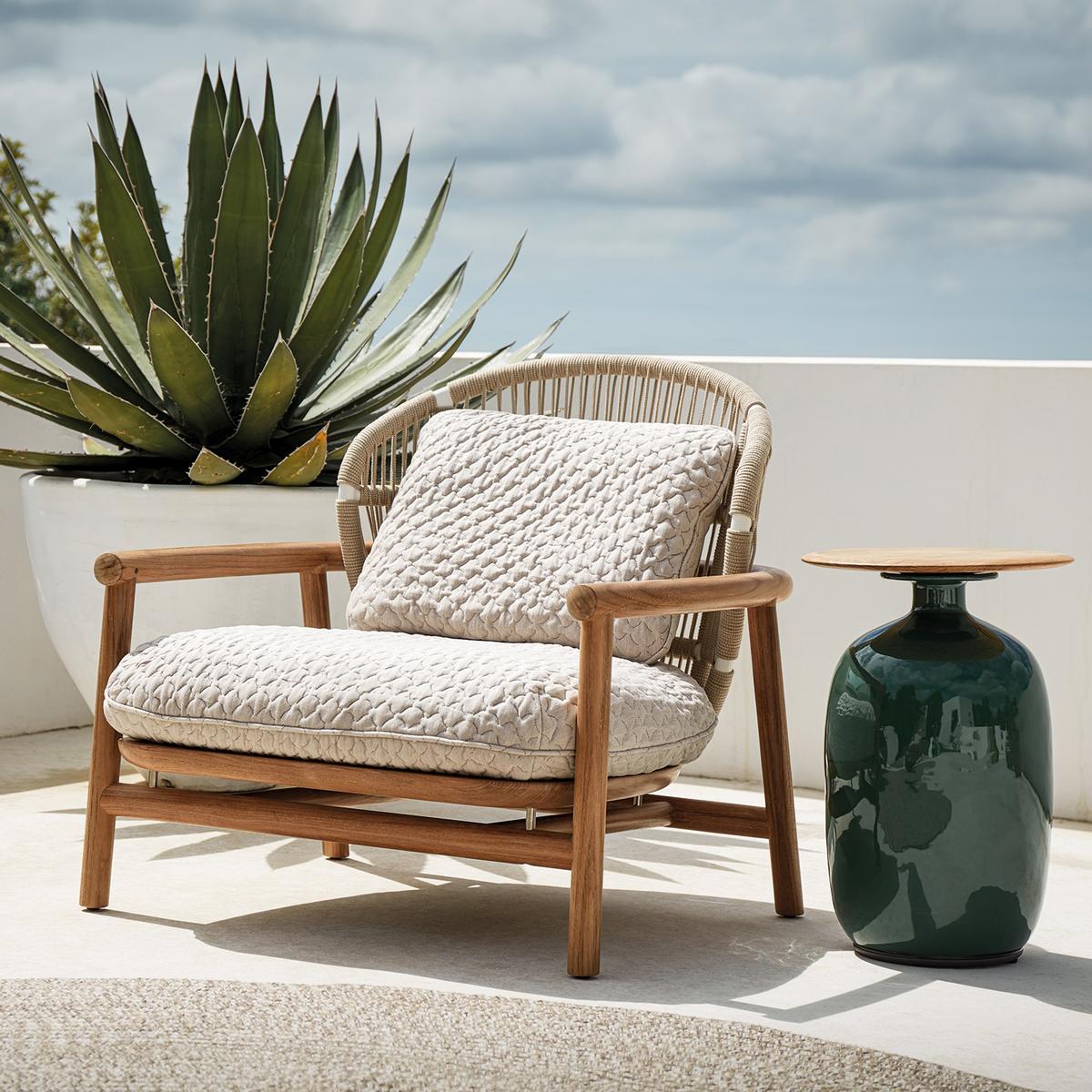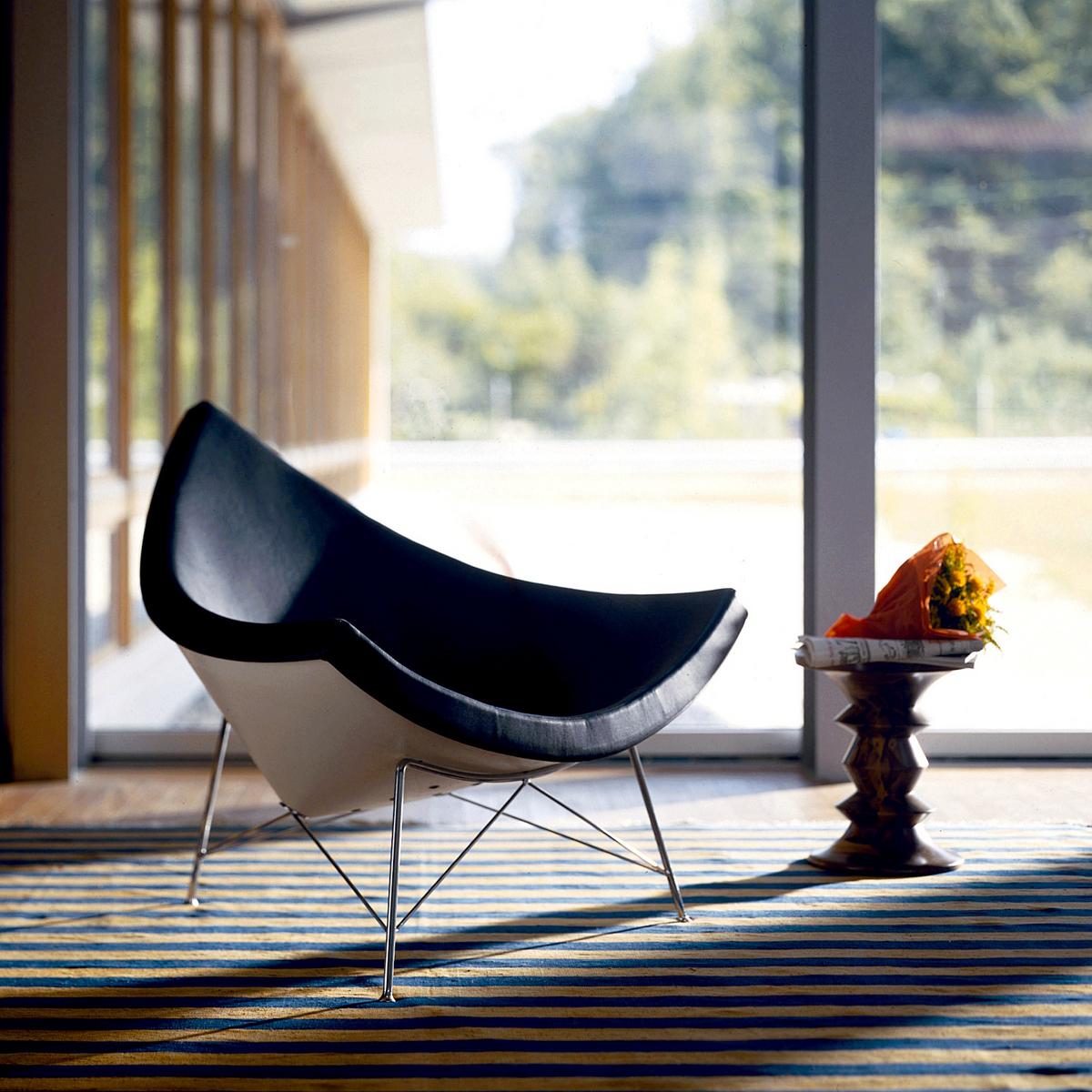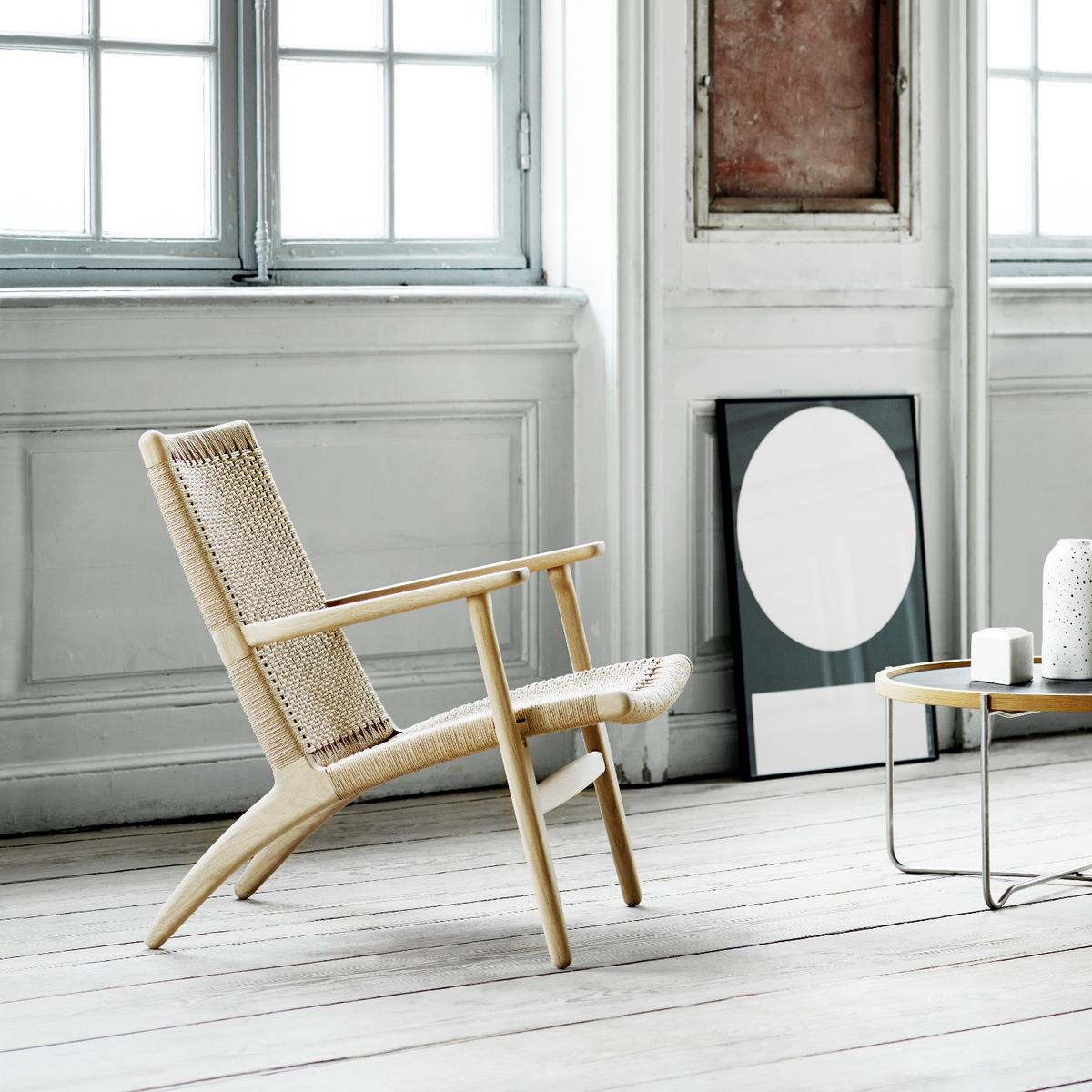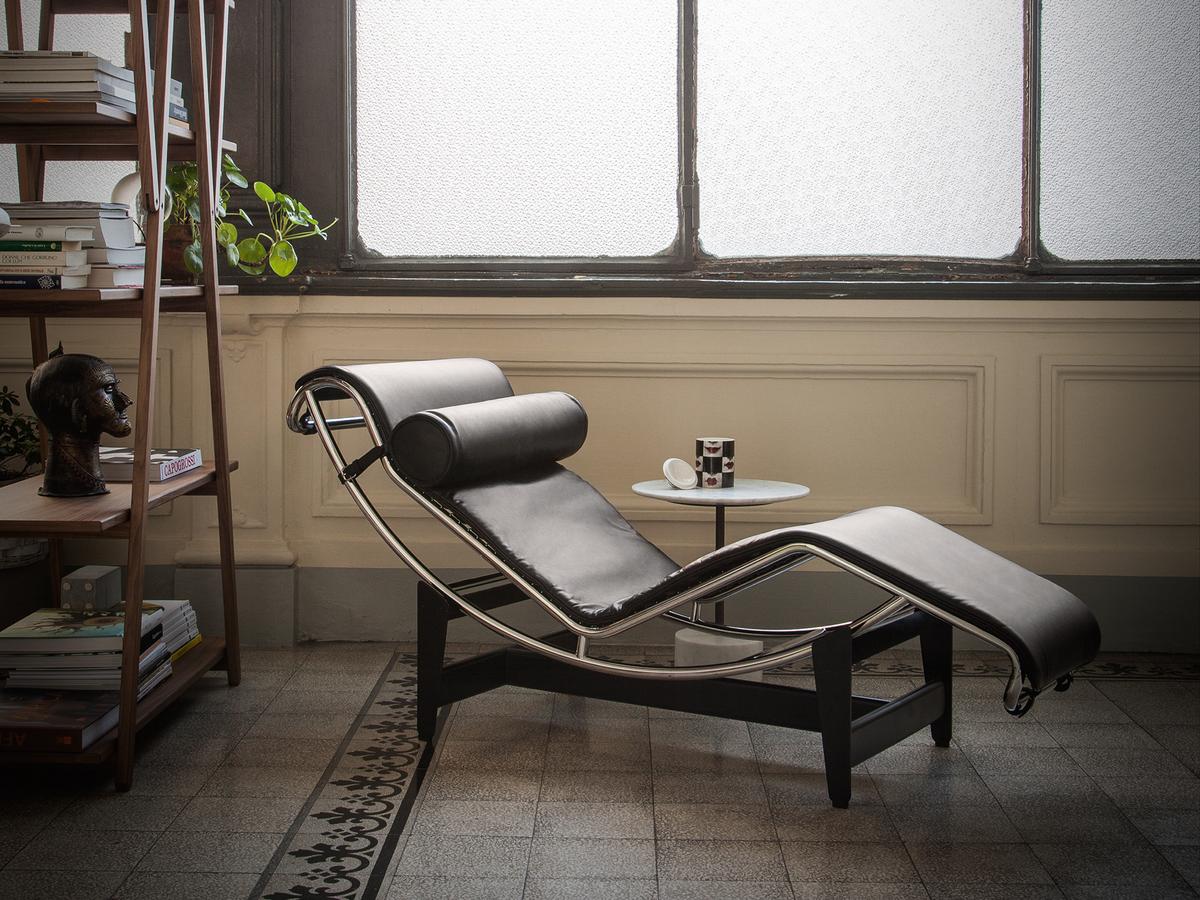Lounge Chairs
Designer lounge chairs: Improve your quality of life with stylish oases of rest
Lounge chairs are not only particularly comfortable seating solutions, but also a statement of style and quality of life. Their use extends across the entire living area, including terraces and other outdoor areas, as well as public spaces such as lobbies and waiting rooms, where they are often employed not only as comfortable seating while waiting but as locations for discreet one-on-one conversations.
► What characterises a lounge chair?
► Perfect furnishing with lounge chairs
► Materials for lounge chairs and their advantages
► Lounge chairs in various styles
► Design classics among lounge chairs
What characterises a lounge chair?
In contrast to the classic wingback chair and its predecessor from the Art Deco era, the club chair, the lounge chair is characterized by a lower seat height, which is around 40 cm for lounge chairs, and a seat that is lowered towards the back. Most lounge chairs are also lighter and are therefore easier to move than a classic, heavy wingback chair or club chair. Designer lounge chairs are striking furnishing elements that create a luxurious, airy and relaxed atmospheres.
Perfect furnishing with lounge chairs
Lounge chairs are extremely versatile and can be used in many environments. Whereby by the following are the most important areas of use:
Living room: Lounge chairs are ideal for creating a cosy reading corner or as a stylish addition to a sofa landscape. Thanks to the deep seat and the low seat height compared to the classic wingback chair, lounge chairs offer even more comfort and invite you to relax deeply. Combined with a matching pouf or ottoman, they become the ideal place for relaxation, contemplation and peace in the living room.
Office: In contemporary office environments, lounge chairs are often used in meeting rooms or waiting areas to provide employees and visitors with a comfortable and inviting atmosphere. And that not just as a sytlish accent: well-being is a decisive factor for greater creativity and productivity.
Hotels, restaurants and reception areas: Designer lounge chairs add a luxurious touch to hotel lobbies and restaurant lounges and offer guests a comfortable place to relax and linger. Most lounge chairs are lighter and take up less space than classic, heavy wingback chairs and club chairs and are therefore ideal for seating groups. Depending on the material, lounge chairs are easy to care for, washable and do not absorb odours such as cigarette smoke - properties that make them particularly suitable for use in busy public areas.
The material and care instructions of the respective manufacturer should be observed before purchasing. Lounge chairs are not only important for the comfort of guests, but also contribute to a positive overall impression of the interior by creating a homely atmosphere with elegance and functionality. Even in reception areas of companies or public institutions, lounge chairs not only provide a comfortable and inviting waiting area, as design objects they enhance the entire room and thus give a positive first impression.
Outdoor areas: Lounge chairs for outdoor use extend the living space outside and offer the opportunity to enjoy nature without having to forego comfort and style. Models made of teak and other hardwoods as well as metal or plastic are suitable for outdoor use. The furniture manufacturer Gloster specializes in high-quality outdoor furniture and offers lounge chairs made of weather-resistant materials that do not neglect design and comfort. Models such as the Fern Low Back Lounge Chair with a frame made of fine teak are as functional as they are aesthetic and provide a stylish relaxation zone even outdoors.
Materials for lounge chairs and their advantages
Choosing the right material not only determines how a chair looks, but also its comfort and durability:
Lounge chairs with leather upholstery: Leather lounge chairs exude elegance and sophistication. They are particularly durable, easy to clean and develop a characteristic patina over time, giving them a unique vintage charm. To prevent the leather from becoming brittle or susceptible to stains, lounge chairs with leather upholstery should be treated with leather care products according to the manufacturer's instructions.
Lounge chairs with textile upholstery: Lounge chairs with fabric upholstery are available in a particularly wide range of colours, patterns and textures, so that they can be easily adapted to the existing furnishings. Upholstery with fabric upholstery has a pleasant feel and ensures coziness and comfort. Most manufacturers provide precise information about the upholstery materials. Before buying pay attention to the respective care instructions or the information on the abrasion cycles, which indicate the resistance of a fabric to abrasion. Textile covers made of plastic such as acrylic or polyester are particularly durable and are often used for outdoor lounge chairs due to their water-repellent properties.
Wooden lounge chairs: Lounge chairs with wooden frames give a room a warm and organic touch. They are robust, durable and timeless in design. Wooden lounge chairs are often available in different types of wood such as oak or walnut and with oiled, stained, varnished or glazed surfaces.
Metal: Metal lounge chairs often have a particularly delicate, transparent design and appear contemporary, chic and functional. They are easy to maintain, which makes them ideal for use in high-traffic areas such as offices or public facilities, or outdoors. In addition, they often offer a robust construction and a sleek, contemporary design. Designer metal lounge chairs that are not upholstered or have an elastic seat are in most cases available with matching cushions for additional comfort.
Lounge chairs in various styles
From classic to futuristic, lounge chairs are available in a wide range of styles. We present the most important ones and give a few examples:
Mid-Century Modern: This style was particularly popular in America in the middle of the 20th century and is closely associated with designers such as Ray and Charles Eames or George Nelson. Mid-century lounge chairs are characterized by their clear lines, organic shapes and minimalist design. They are timeless and go well with a variety of interior design styles. Vitra produces several lounge chairs in this style, including the Coconut Chair by George Nelson and the Eames LAR Plastic Armchair.
Scandinavian: The Scandinavian design tradition is also influenced by the developments in design history in the first half of the 20th century. The focus here is also on functionality, formal reduction and natural shapes. Scandinavian lounge chairs are also characterized by a predominantly light colour palette and the use of natural materials. The best example is the Scandinavian design classic CH25 Lounge Chair, which is made of oak or walnut and has a seat and back made of paper yarn and exudes a particularly calm and relaxed atmosphere.
Bauhaus: Lounge chairs from the Bauhaus era are characterized by their functional, minimalist design and the use of modern materials, such as tubular steel, which was novel at the time. These lounge chairs, which were designed in the 1920s and 1930s, embody the design principles of the Bauhaus school: form follows function, the integration of art and craft, and the use of industrial manufacturing methods. Designers such as Marcel Breuer and Ludwig Mies van der Rohe shaped the aesthetics and comfort of these armchairs with their iconic designs, which often combined tubular steel frames and simple but elegant upholstery. For example, the cantilever lounge chair S 35 L by Marcel Breuer is today a valued classic of modern furniture design that embodies timeless elegance and innovative craftsmanship.
Design classics among lounge chairs
The design classics among lounge chairs are timeless masterpieces of furniture design that are characterized by innovative design, exceptional comfort and iconic aesthetics. They were often designed by renowned designers and have expanded the boundaries of furniture design. Lounge chair design classics have often become symbols of the contemporary style of their time. With high-quality materials and first-class workmanship, they not only offer luxurious seating comfort, but also shape the appearance of rooms and become sought-after collector's items for design lovers all over the world. We briefly introduce the three most famous design classics among lounge chairs.
Eames Lounge Chair: The Eames Lounge Chair, designed by Charles and Ray Eames in 1957 is an iconic piece of furniture: the leather upholstery bevelled in plywood shells, the generous proportions of the seat, backrest and armrests, as well as the rotating base make up the unmistakable, characteristic design of the Eames Lounge Chair and ensure incomparable comfort. With its elegant, timeless shape and high-quality workmanship, it is a true masterpiece of modern design.
Barcelona Chair: The Barcelona Chair was designed by Ludwig Mies van der Rohe for the German pavilion at the World Exhibition in Barcelona in 1929 as a seat for the Spanish royal couple. A royal seat that has now become an emblem of minimalism, luxury and elegance. With its slim profile, curved stainless steel frame and robust leather seat cushions, the Barcelona Chair embodies the heritage of classic modernism.
LC4 Lounger: Another masterpiece of modern design is the 4 Chaise longue à reglage continu, or LC4 Chaiselongue, designed by Le Corbusier, Charlotte Perriand and Pierre Jeanneret. With its ergonomic yet futuristic shape, machine-like steel base and leather or fur-covered reclining surface, it offers ultimate comfort and, as a milestone in modern design history, makes a real statement in interior design.


